
Back in August, we presented ACE-sponsored research on the performance benefits of training with a sauna suit. That study found that short-term training in a sauna suit improves heat acclimation and endurance training, but what about non-athletes who are not pursuing performance-related goals? Will the typical gym-goer, who is seeking weight loss or improved fitness, see any benefit from wearing a sauna suit during his or her workouts?
Lance C. Dalleck, Ph.D., and his team of researchers in the High Altitude Exercise Physiology Program at Western State Colorado University wanted to quantify the effect of health-related benefits associated with exercise training while wearing a sauna suit among a group of individuals who are overweight or obese.
This research used Kutting Weight sauna suits, which are made of Neoprene and are similar to a wetsuit. They can be worn on their own, or under clothes like shorts and a T-shirt if an individual is uncomfortable exercising in the sauna suit alone. According to the manufacturer, the Kutting Weight suits will “amplify your workouts for increased results” in several ways, including increasing your body temperature more quickly, enabling you to burn more calories, and increasing your mental and physical toughness.
There is ample evidence that exercise combined with heat therapy provides cardiovascular health benefits. The question being asked by Dr. Dalleck and his team was this: Can portable heat stress in the form of a sauna suit beneficially alter health outcomes for overweight and obese exercisers?
The Study
The researchers recruited 45 overweight or obese participants between the ages of 18 and 60 years old to take part in an eight-week exercise training intervention. To qualify for participation, these individuals had to have a body mass index (BMI) between 25 and 40 kg/m2 and a body-fat percentage that was greater than 22% for men and 32% for women. In addition, they had to be sedentary and considered low-to-moderate risk. Individuals who were considered high risk due to the presence of cardiovascular, pulmonary and/or metabolic disease were not chosen to take part in the study.
The participants were randomly divided into three groups: (1) a sauna suit group, (2) an exercise alone group and (3) a control group. The make-up of groups 1 and 2 were matched for sex and body-fat percentage.
The members of those two groups performed progressive exercise programs with similar frequencies, durations and intensities, and that met the recommendations for overweight or obese individuals. Each week, the “sauna suit” and “exercise alone” groups performed three 45-minute moderate-intensity workouts and two 30-minute vigorous-intensity workouts. Moderate-intensity modalities varied among the elliptical, rower and treadmill, while the vigorous workouts were spin classes during which heart rates were monitored to ensure appropriate intensities.
The only difference between the programs for these two groups was that one group wore the sauna suit during the workouts while the other did not. All participants were instructed to maintain their usual eating habits and not to perform any physical activity outside the study.
The control group completed the pre- and post-study testing, but was asked not to work out or change their daily behaviors in any way over the course of the eight weeks.
A number of baseline and post-program measurements were taken:
- Height and weight
- Body composition (percent body fat using skinfold calipers)
- Fat metabolism
- Resting metabolism
- Anthropometric measures (waist circumference)
- Resting heart rate
- Blood pressure
- Maximal oxygen uptake (VO2max)
- Fasting blood lipids
- Glucose
The Results
The results are presented in Table 1. Remember, the “sauna suit” and “exercise alone” groups did not differ significantly in terms of physical or physiological characteristics at baseline. Note that four people did not complete the study—more on this in the “Enjoyment and Adherence” section.
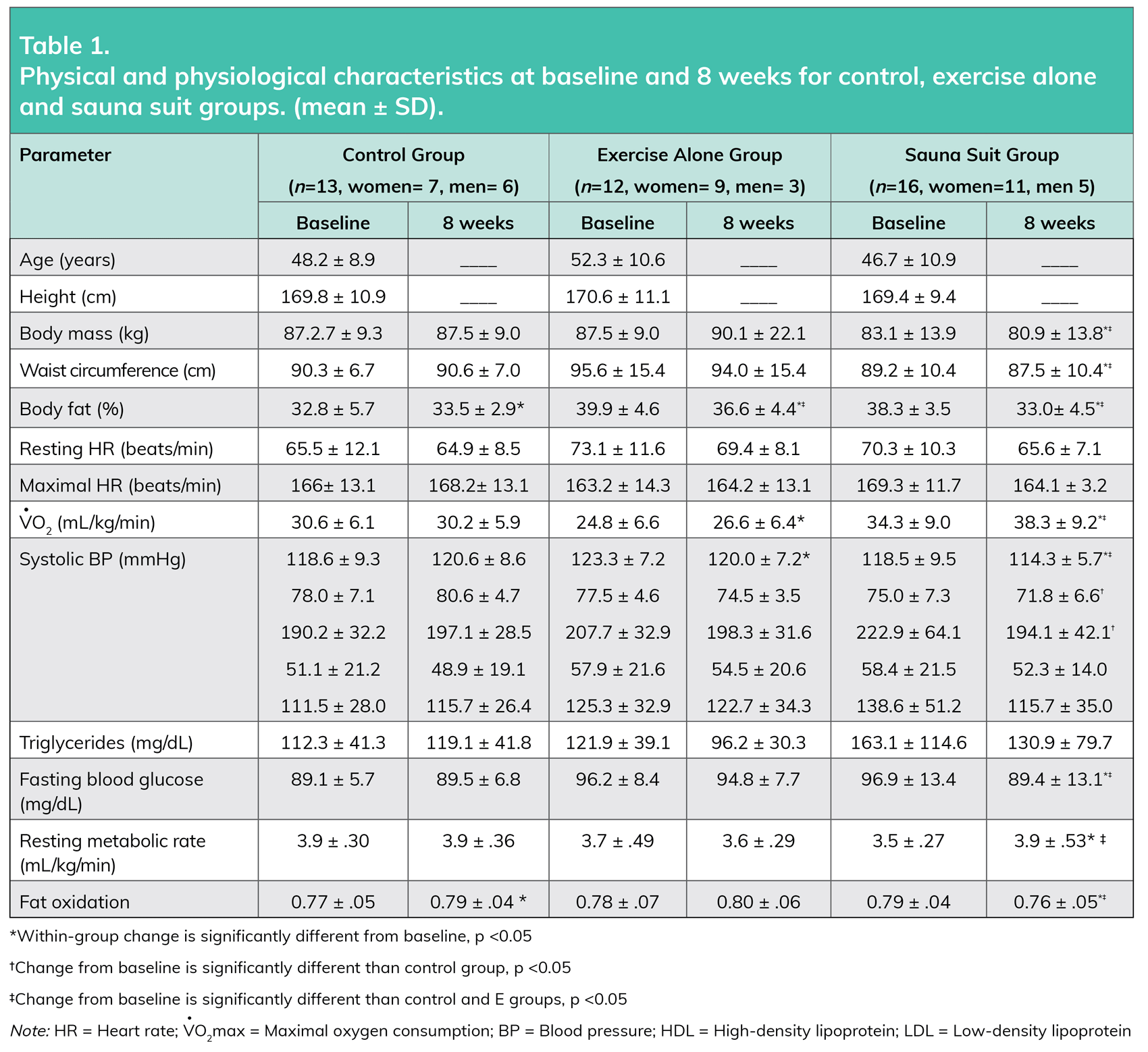
Both the sauna suit and exercise alone groups saw significant improvements in the following areas as compared to the control group: systolic and diastolic blood pressure and total cholesterol. In addition, waist circumference decreased significantly in both groups that performed the exercise program.
While all exercisers—in both the sauna suit and exercise alone groups—saw the benefits described above after eight weeks of regular participation, there were some key areas where individuals wearing the sauna suit saw more dramatic improvement than their counterparts.
Most importantly, the sauna suit group saw an 11.7% improvement in VO2max, compared to a 7.3% improvement in the exercise alone group. VO2max is considered the best indicator of cardiovascular endurance, so an increase in this one parameter is tremendously significant. Stated simply, this single measurement indicates that wearing the sauna suit enhanced physical fitness and improved health more so than performing the same amount and intensity of exercise without wearing one.
The sauna suit group also saw a 2.6% reduction in body weight compared to a 0.9% reduction in the exercise alone group. In addition, body fat decreased by 13.8% in the sauna suit group and only by 8.3% in the exercise alone group.
The sauna suit group also experienced enhanced benefits compared to the exercise alone group in the following areas: fasting blood glucose (7.7% vs. 2.1% reduction), resting metabolic rate (an 11.4% improvement vs. a 2.7% decrease) and fat oxidation (3.8% increase vs. 2.6% decrease).
Delving Deeper Into the Science
Dr. Dalleck posed an interesting question: “There are compelling findings that exposure to heat has been associated with a lower risk of mortality and cardiovascular disease. What are the mechanisms that drive that?”
As explained by the research team: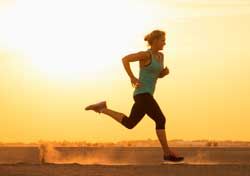
“It is well established that endurance-training intensity is a primary determinant for exercise-induced improvements in VO2max, but the significant increase in the sauna suit group may have been due to heat stress combined with exercise training. Heat stress has been shown to elicit plasma volume expansion, improved myocardial efficiency and increased ventricular compliance, which can allow larger end-diastolic volume and greater cardiac outputs. In addition, research has found acclimatizing to the heat to be beneficial for many physiological adaptations, one of which is cardiovascular endurance. These adaptations may explain the significant improvement in V?O2max in the sauna suit group due to a possible increase in maximal cardiac output as a result of plasma expansion. Epidemiological data has also indicated that an elevation in cardiorespiratory fitness is associated with an attenuation of cardiometabolic risk among individuals with the metabolic syndrome, a disease associated with being overweight or obese.
“The present research suggests that a sauna suit may be an effective method for improving VO2max and performance for individuals who are overweight or obese. In the present study, the sauna suit group improved their VO2max by 11.7% versus only a 7.3% improvement in the exercise alone group. This improvement in cardiorespiratory fitness is important for clinical findings because it is well stated that a low cardiorespiratory fitness might contribute to diminished physiological function and premature death. Additionally, research suggests a 15% reduction in mortality for every 10% improvement in cardiorespiratory fitness.”
Enjoyment and Adherence
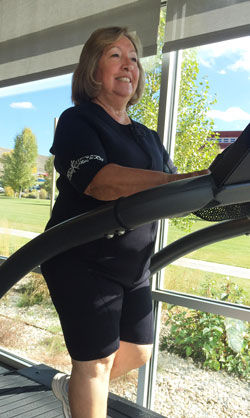 Few things are better predictors of exercise adherence than how much an individual enjoys his or her workouts. With this in mind, the research team had all participants complete a Physical Active Enjoyment Scale (PACES) questionnaire after the eight-week program to assess the participants’ views on the exercise program.
Few things are better predictors of exercise adherence than how much an individual enjoys his or her workouts. With this in mind, the research team had all participants complete a Physical Active Enjoyment Scale (PACES) questionnaire after the eight-week program to assess the participants’ views on the exercise program.
The members of the sauna suit group felt that the suit was as comfortable as traditional workout clothes and did not interfere with the exercise-training program.
Remember those four individuals who dropped out of the study? You might suspect that feeling hotter or even self-conscious during workouts might lead to higher rates of dropout, but that was not the case. It is interesting to note that all four dropouts were part of the exercise alone group, though none left the study for reasons associated with the study itself.
Wearing the sauna suit does not seem to negatively affect exercise adherence, which is an important consideration when working with any client, but especially with those struggling to manage their weight.
The Bottom Line
The major findings of this study were as follows: Overweight and obese exercisers who wore a sauna suit while exercising saw significant improvements in VO2max, blood glucose, resting metabolic rate, fat oxidation, body weight and body-fat percentage when compared to traditional exercise training alone. These findings clearly justify using a portable heat stress in the form of a sauna suit as an exercise-training strategy for overweight and obese clients who are looking to enhance the health benefits of their workouts.
That said, Dr. Dalleck stops short of saying that all gym-goers would benefit from wearing a sauna suit, as this research looked at a very specific and well-supervised exercise program in terms of duration, frequency, intensity and modality.
There are a number of caveats to consider. Longer-duration workouts and interval training were not investigated as part of this study. In addition, all exercise took place in a temperature-controlled environment; introducing additional heat stress by wearing a sauna suit in an already warm environment has obvious implications in terms of potential heat stress.
Finally, and this is extremely important, the research team eliminated anyone with diabetes from taking part in this study. “Individuals with diabetes have a reduced thermal capacity,” says Dr. Dalleck. This is an important reminder of the importance of a proper health screening and individualized exercise programming.
The bottom line, however, is that overweight and obese clients who are performing safe, individualized exercise programs under the supervision of a health and fitness professional would benefit from wearing a sauna suit during at least some of their workouts. The health benefits are clear.
In light of the current overweight and obesity epidemic, the findings of this study are extremely important. This research provides evidence that portable heat stress in the form of a sauna suit may assist with weight loss and improve health outcomes in the large percentage of the world’s population who are overweight and obese.
Why Does ACE Sponsor Fitness-related Research Studies?
This study was sponsored by the American Council on Exercise. For more than 20 years, ACE has commissioned independent research studies from major universities and trusted partners across the country, covering everything from infomercial fitness products to the effectiveness of some of the hottest trends in health and fitness. ACE is committed to investing in these studies as part of its mission to promote the benefits of physical activity and to protect people from unsafe and ineffective fitness products and trends. You can find more information about past ACE-sponsored studies, including research on the best abdominal exercises, kettlebell workouts and Zumba, by clicking here.





 by
by 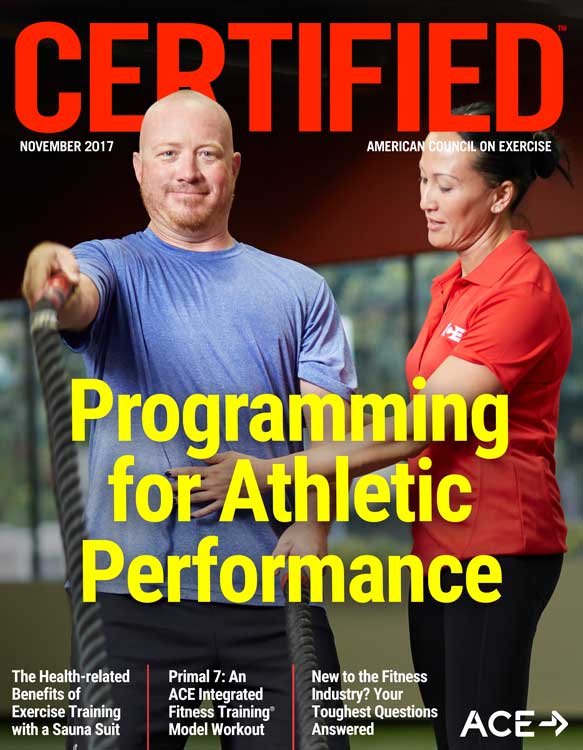

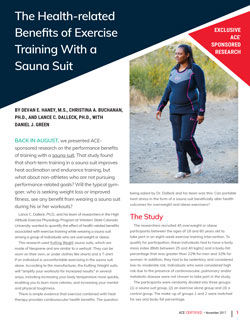


 Few things are better predictors of exercise adherence than how much an individual enjoys his or her workouts. With this in mind, the research team had all participants complete a Physical Active Enjoyment Scale (PACES) questionnaire after the eight-week program to assess the participants’ views on the exercise program.
Few things are better predictors of exercise adherence than how much an individual enjoys his or her workouts. With this in mind, the research team had all participants complete a Physical Active Enjoyment Scale (PACES) questionnaire after the eight-week program to assess the participants’ views on the exercise program.
